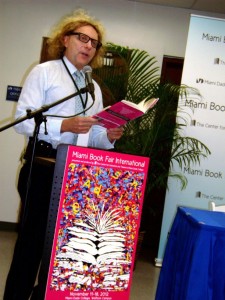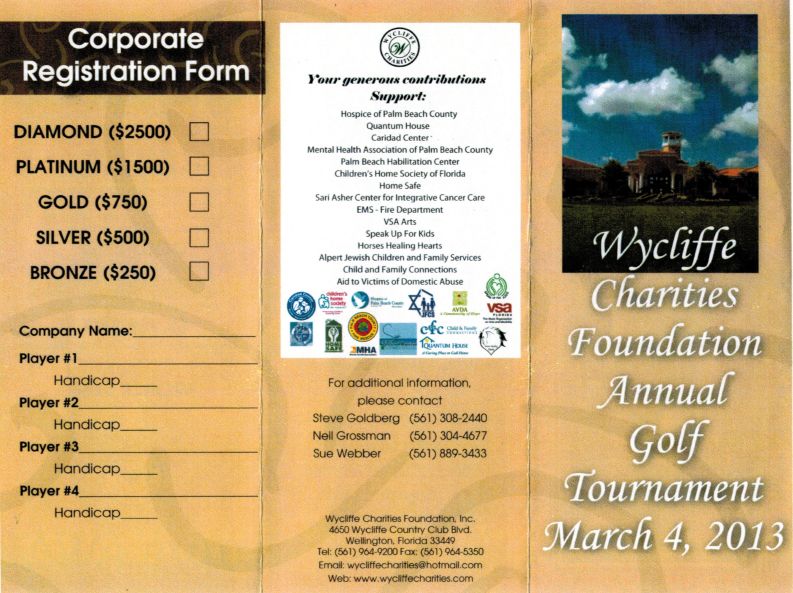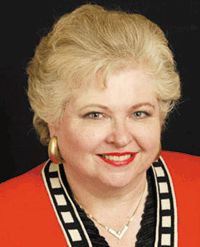An Interview with Novelist Thane Rosenbaum
By Marla E. Schwartz
Thane Rosenbaum, a successful novelist, essayist (whose work has been published by the Huffington Post, Los Angeles Times, New York Times, Wall Street Journal, Washington Post, and other publications), book critic, the John Whelan Distinguished Lecturer in Law teaching human rights, legal humanities, and law & literature and also the Director of the Forum on Law, Culture & Society, recently appeared at Miami Book Fair International. He read an excerpt from his most recent novel, “The Stranger Within Sarah Stein,” published by Texas Tech University Press.This book continues his elegiac yet lively string of novels that include holocaust themes, legal themes and touch upon the inner-lives of children which are set in either New York and/or Miami all of which are deeply moving spiritual books.

If you’re unfamiliar with Thane’s work he has been lauded by Holocaust scholar Alan L. Berger as “one of the most eloquent and anguished of American second-generation voices.” In his first novel, “Elijah Visible” (St. Martin’s Press 1996, receiving the Edward Lewis Wallant Award for the best book of Jewish-American fiction), his protagonist Adam Posner attempts to climb the corporate ladder but holds himself back with second-generation Holocaust survivor guilt which is very artfully depicted through nine vignettes.
“Second Hand Smoke” (St. Martin’s Press 1999, a finalist for the National Jewish Book Award) is very much a thriller as it deals with mob life in Miami – but also depicts second-generation Holocaust survivors who carry the burden of their parent’s experiences and memories, something Thane’s parents did not want to encumber him with; thus not sharing their experiences with him; however, personally speaking – how can one not feel an obligation to carry on such stories, whether in fiction or non-fiction? And this rhetorical question is the guiding light of Thane’s journey as a highly esteemed author.
“The Golems of Gotham” (Harper Collins 2002, a San Francisco Chronicle Top 100 Book) is about a mystery writer whose Holocaust surviving parents have committed suicide and whose fourteen-year-old daughter tries to help him by summoning up the ghost of his parents but inadvertently reaches the ghosts of people such as Primo Levi.
Thane is also the author of highly successful non-fiction books which includes, “The Myth of Moral Justice: Why Our Legal System Fails to Do What’s Right”, (Harper Collins 2002 and a San Francisco Chronicle Best Books of 2004 selection), the editor of the anthology, “Law Lit, from Atticus Finch to “The Practice”: A Collection of Great Writing about the Law,” and his forthcoming book released in April 2013 is entitled, “Payback: The Case for Revenge.”
Although he is the only child of Holocaust survivors, Thane’s parents did not commit suicide. His father Norman had suffered a series of heart attacks and this was before all the great strides in treating heart disease had occurred, so his doctors recommended he move to Florida in order to prolong his life. So in 1969, Thane and his parents moved from Washington Heights, New York to Miami Beach, Florida where his father did eventually succumb to a series of heart attacks. Not long after, his mother Betty passed away from pancreatic cancer leaving eighteen-year-old Thane to figure out his way in the world as a young man without the benefit of their guidance.
His parents met in 1950 in Stuttgart, Germany after Norman survived Bergen-Belsen, a Nazi concentration camp in northwestern Germany, and where Betty came to be after surviving the Polish Nazi concentration camp Majdanek – also known at the Mountain of Ashes. Eventually they were married, made their way to the United States and Thane was born in 1960. They never spoke about their experiences, especially to their son, probably as a way, in their own minds, of protecting him from the horrors they experienced. Thane went onto earn great achievements in his life some of which include: B.A., University of Florida, summa cum laude 1981; M.P.A., Columbia University, 1983; Harvey T. Reid Scholar; Editor-in-Chief, University of Miami Law Review; J.D., University of Miami, cum laude 1986; Clerk, Judge Eugene P. Spellman, United States District Judge, S.D. FL, 1986–87; Associate, Debevoise & Plimpton, 1987–91. His professional affiliations include: PEN American Center, American Bar Association, New York Bar Association. He currently lives in New York City with his daughter, Basia Tess Rosenbaum, a student at Hunter College.
Thane’s appearance at MBFI 2012 was grouped together with other such marvelous Young Adult writer’s as Jessica Martinez on “The Space Between Us” and Malin Alegria on “Border Town #3: Falling Too Fast”. Thane’s novel, “The Stranger Within Sarah Stein” has been described to be more like Alice in Wonderland (an adult novel masquerading as a children’s story) and nothing like Harry Potter (a book written for children but gained a loyal adult following). Thane introduced his book at the fair in his own way.
“Sarah Stein is twelve-years-old and her parents are going through a divorce. She lives in New York City. Her mother owns a famous chocolate factory at one end of the Brooklyn Bridge and her father is a famous abstractionist painter living on the other end of the Brooklyn Bridge on the Manhattan side – hence this really great photo of the Brooklyn Bridge,” he said while pointing to the beautiful book cover, designed by Kasey McBeath. He continued, “As often times happens in divorce, she loses so much of who she is and trades off everyday living between both homes traveling across the Brooklyn Bridge on her bicycle and in Brooklyn she becomes very much like her mother, prissy, prim and proper; and with her father she’s like a gum-chewing, motorcycle jacket wearing bicycle chick and she never seems to notice that she becomes two very different Sarah Steins. People at school even accept the fact that everyday a different Sarah will show up. But she has two guardian angels. She has one grandmother who has a mysterious Holocaust story; and in the middle of the Brooklyn Bridge each day she finds a magic portal where there’s a fireman who has a mystery of his own related to the fact that he was one of the firemen called to the scene during the first World Trade Center bombing in 1993. And he becomes her very much Boo Radley, her guardian angel. It’s there that she comes everyday to make the change as she goes from one Sarah to the next.”
To put this more into context, for those who may recognize the use of the name Boo Radley but cannot remember where it came from, here’s the deal. Arthur ‘Boo’ Radley is a character in Nelle Harper Lee’s 1961 Pulitzer Prize-winning novel “To Kill a Mockingbird,” a book which focuses on racism in the author’s hometown of Monroeville, Alabama. Nelle’s father A.C. Lee Harper defended two black men, who were wrongfully accused of murdering a white storekeeper, but he lost the case and both men, father and son, were hanged. This event forever changed the life of Nelle. In her famous novel, Boo Radley was a mysterious recluse whose heroics eventually protect the children in the book. Thus, Clarence Wind, a recluse and disgraced fireman missing since 9/11 appears throughout Thane’s novel as such a character as he becomes Sarah’s secretive personal champion. But Sarah also has a ‘real-life’ champion in her grandmother, who has a mysterious Holocaust past that is eventually revealed to her granddaughter.
Thane answered some questions pertaining to his resplendently-written novel that transports its main character, tween Sarah Stein, into a magic portal in the Brooklyn Bridge when riding her bike one day she collides with a so-called homeless man.
AroundWellington.com: Do you have a stranger living within yourself?
Thane Rosenbaum: I think the artistic temperament, by working so closely with emotionally raw material, brings out the stranger within me. So, yes
AW.COM: Are settings and descriptions very important to you as a writer? If so, how do you do it so well?
TR: Settings and descriptions is what makes a novel; without settings and descriptions it would be journalism. I think it’s the settings and descriptions that transport the reader and that’s the very difference between telling a story at a campfire that would take two minutes as opposed to opening up an entire world. An entire world has colors and smells and places and things we can recall … settings and descriptions is what makes novelists sorcerers, magicians. So I’m not going to tell you how I do it … I’m not going to give it up.
AW.COM: Do you feel the classification of your book as a Young Adult novel is correct in its categorization?
TR: This is actually my first YA book. I didn’t write it as a YA book and I’m still not sure it is one but everyone else does and all the book reviews say it is one, so it must be one. I’m working on a novel and that’s a grown-up book, but I thought this one was, so I don’t know, maybe they’ll call that a YA novel too. It’s set entirely in Miami Beach. It’s a series of Miami Beach vignettes from 1972 with a boy who is twelve. It’s interesting because he only narrates some of it, so I don’t know how it’ll be characterized. I had written another novel in which a fourteen-year-old girl narrated six of the thirty-six chapters so an editor had read the novel and called me and told me that that voice was a young adult voice so I said ‘really, cause I didn’t know’ and he told me to see what would happen if I write in that girls voice and so that’s how this happened; I wasn’t really thinking about doing anything like that. It was at the Los Angeles Times Festival of Booksduring the question and answer period that I said, “how is ‘To Kill A Mockingbird” not a YA novel? How is “The Chosen” [by Chaim Potok} not a YA novel? How is “Huckleberry Finn” {by Mark Twain} not a YA novel?’ – to me I don’t understand the distinctions. How is “The Catcher in the Rye” {by J. D. Salinger}not a young adult novel? I understand it’s the times in which these books were published – but I mean within the context of today’s distinctions. I remember reading “The Catcher in the Rye” in 10th grade and was completely enthralled by it. I didn’t know enough to not know that I was writing a YA novel. So these are new categories, and I’m too old school for it.
AW.COM: Do you ever have writer’s block?
TR: I don’t think I’ve actually had writer’s block per say but I’ve had better days than good days. I did write a novel about a writer who had writer’s block which shows how non-fiction fiction can be because I really didn’t have any experience with it and I was writing about someone who actually couldn’t write – which meant – I don’t know what that meant.
AW.COM: Do you plot out your books before the writing begins?
TR: I’m a lawyer by training so I do everything possible not to plan my books. I just reject that other side of me so I just write them and I don’t worry about whether I’ve planned them; I don’t have a title at the beginning, I don’t really have characters – I just see where it goes.
AW.COM: So the idea of many of your characters having doubles lives/secrets within themselves permeates throughout the novel, you didn’t plan any of this before-hand?
TR: The idea of using doubles: Sarah’s two lives – the grandmother’s two lives …. I didn’t have this idea in mind when I started writing the book. The only thing I had in mind was the idea of what it’s like to have to serve two masters; two parents and this is a common thing among of children of divorce, to serve a need and create the kid who is expected of that parent. And I think this is a very exaggerated portrait but that’s the only thing I had in mind when I started the book.
AW.COM: Please discuss the theme of divorce in your book.
TR: The idea that in divorce so often the parents become really bad at parenting. So in this case Sarah becomes the surrogate parent. In so many ways people assume this book is autobiographical and although my daughter is a divorced child – she didn’t negotiate the terms of the situation because she didn’t need to but the parents in the book brought this upon themselves and their daughter. It’s very rare that it would happen … but because in this case the Judge asks her (Sarah) to tell him what’s been going on – and that could’ve happened. What makes it possible to have happened in the book is that I cheated … and let it happen.
AW.COM: Please discuss the 9/11 theme.
TR: The 9/11 theme comes in and I wrote about in the acknowledgements as it’s based on a true story. I thought it deserved another life because in fact because it’s an amazing story. The building fell all around the fire-fighters and if they would’ve gone a little faster they would’ve been killed and if they went a little slower they would’ve been killed and they got caught as the steel molded around them and they were stuck in a cocoon-like room where they were stuck for twenty-hours as the continued to dig. The day it happened I was writing and I usually keep the phone off when I work and my phone kept ringing and I usually don’t get that many calls – so I picked up one of them and it was a friend of mine in Brooklyn asking me if I was okay. I said ‘yes, what’s going on’ and he told me to turn on CNN. I turned on the TV and within seconds the first tower fell and my knees buckled. I was in shock by that – I couldn’t get around the idea that this wasn’t a movie as nothing like that was imaginable. Then the usual thoughts entered my head like – how do I get to my daughter? She was in school on the other side of the bridge – in Brooklyn and I couldn’t get out – nobody could get out. The only way to get to Brooklyn was to walk across the bridge.
AW.COM: The grandmother’s life was saved because she ended up being raised in a convent. Do you know anyone who had this actual experience?
TR: I don’t know anyone personally – my books are all about holocaust tales, so invariably over the years people come up to me and tell me their stories. I’ve never written about a hidden child – this is the first time I’ve written about a character who was a hidden child. I’ve written about books over the years concerning hidden children of the holocaust so I knew a little about these children – but otherwise, I didn’t know much about it. The idea that the grandmother still holds the rituals she learned while hidden as part of her life is important. And how would we know – if we weren’t a kid during that time period – how we would react as an adult based on the circumstances surrounding our experiences?
AW.COM: How did you come up with making Sarah’s father an abstract artist and her mother the owner of Carly Cocoa’s Chocolate Factory?
TR: I wanted to play with the idea of chocolate as a taboo. Bringing Clarence into the story adds to the mystery, particularly when he begins to show up all the time … he shows up at parties, he was the stenographer in the divorce trial …
AW.COM: Talk about the settings of your novels – including the one you’re writing right now that’s set in 1972.
TR: All of my earlier novels had Miami Beach stories – they weren’t all set entirely in Miami, but pieces of them were set in South Florida. 1972 was an amazing time. It was the beginning of Watergate; it was the year that two Presidential conventions were held in Miami Beach, both Democratic. It was an amazing, evocative time and so I realized there were a lot of really interesting characters who lived in Miami Beach in 1972. The Vietnam War wasn’t over – we were in the post Age of Aquarius, but we were still very much part of the counter-culture. Lots of things were going on. It was only a few years earlier that Jim Morrison exposed himself at a concert in South Miami. There were a lot of crazy things going on. The United States had just landed on the moon a few years before, Woodstock had taken place a few years before – and everyone living in Miami felt a piece of that; it was the very earliest of resurgence of true Cuban power because in the ‘60s, Miami Cubans were still very much given a home in South Florida and it was really in the 1970s when they really started to make a real imprint in the area. And I lived here then so it’s very evocative to me. Again the settings, descriptions and scenes are very real to me from that era. I think Miami from 1959 until the mid 1970s is very rich in memories for people. People who were living here at the time have a real awareness of how rich it really was based on the gatherings of people from Cuban exiles, Holocaust survivors, snowbirds – they were all here – this was before Canadians came down. There was no hockey team, there was no baseball team there was no basketball team – well, there was the Miami Floridians, a professional basketball franchise – the original which merged with the ABA-NBA in 1976. They had basketball games but nobody went; the biggest thing that ever happened was the Miami-Dade County Circus and the Harlem Globetrotters when they came and that was about it. Things are very different now.
AW.COM: Is it difficult to draw on your own life experiences as you write a novel?
TR: To some degree writing certain stories is very much like having an out of body experience. But the only way to be able to write is to be to able to see one’s own experiences which can be very dangerous stuff. It’s like flying too close to the sun, if you do, its gravitational pull will pull you in … so when you’re writing characters close to your own experiences you need to know when to pull away.
AW.COM: The Brooklyn Bridge doesn’t look very safe for a young person to ride one’s bike across – is it safe for your character Sarah to be doing so? Would you have let your daughter do it at that age?
TR: Great questions. First of all, on the Brooklyn Bridge, there’s an upper pathway that’s an upper walkway, so you’re not riding with the cars – the cars are actually below – so this is a very doable thing. It’s very much a boardwalk, very 19th century – these are wood boards … so she’s riding along with the other bikes. She’s only twelve, she lives on both sides so she gets off the bridge and then she’s in Tribeca; she gets off the bridge and she’s in DUMBO. The other thing is that the NYC of today isn’t the NYC of the ‘60s or ‘70s; when my daughter was twelve she was walking around and she would’ve been skilled enough to ride her bike across the bridge. It’s also part of the fantasy of the book … Sarah spends so much time inside the magical portal within the bridge. The interesting thing is before the book came out but after I’d already written it there was an article in the New York Times explaining that the bridge had holes in it that were used for storage. People didn’t realize that, and I also didn’t know there were actually doors in the bridge because it looked like solid stone. I think it’s the idea of Sarah being part of an Alice in Wonderland type of adventure where she falls through the rabbit hole in the Brooklyn Bridge and she comes out very much like she’s inside an Alice in Wonderland tale. There’s a trial scene so I tried to mirror some of those elements – and there’s several instances where she’s seeing more of herself and the idea that only the mirror is revealing multiple Sarahs and only the world seeing two different Sarahs.
AW.COM: If you had to choose between being only a law professor or only a novelist – could you choose?
TR: If I had a choice I’d be a novelist.
As it turns out more than half of the YA readers are actually adults over 21-years-old who have discovered how great the writing is in this market. It seems that many other writers who had one of their novels classified as a YA selection were also surprised. But many novels are crossed-referenced. In fact, Sam Roberts, the urban affairs correspondent of The New York Times also commented on this distinction. “Rosenbaum has written a charming, New York-centric fantasy about a precocious 12-year-old girl whose identity is fractured by the separation of her parents. Describing ‘The Stranger Within Sarah Stein’ as just a children’s book would be selling it short.”
If you missed Thane during his recent visit to South Florida, don’t despair because he’s going to make an appearance March 9, 2013 at 7 PM in Boca Raton. He’ll be at Florida Atlantic University, 777 Glades Road, during the Fifth Annual Kultur Festival, a celebration of Jewish Culture sponsored by FAU Libraries and the Jewish Cultural Society at Florida Atlantic University Libraries. The festival, which will be on the fifth floor of the Wimberly Library, uses film and theater, lectures, storytelling, book arts and music to showcase FAU Libraries’ special collections. The festival is from March 2 – March 9, 2013.Thane will be reading excerpts from his book “The Golems of Gotham” with musical accompaniment by the Klezmer Company Orchestra, the library’s professional ensemble-in-residence, with Randi Fishenfeld on violin and Aaron Kula on accordion. Call 1-800-564-9539 for ticket information.
Additionally, Thane, in the style of David Frost and Dick Cavett, hosts/moderates an annual discussion series at the , Lexington Avenue and 92nd Street, New York, NY, with leading newsmakers of our times. For more information go to: .
And for more information on Thane you can go to: and you can follow him and/or tweet him .
*****
Marla E. Schwartz is a Senior Writer for Miami Living magazine and a freelance writer for Lighthouse Point magazine and AroundWellington.com. Her photographs have appeared in these publications as well as the Miami Herald, the Ft. Lauderdale Sun-Sentinel and the Palm Beach Post. Her play, HOLD ONTO YOUR DREAMS was recently produced in Miami at New Theatre’s 1-Acts Festival Winter Session. Her short play BRUNCH SOON will be produced will be co-produced by White Rose Miami/Performing Arts Exchange on Fri. Feb 15 and Sat. 16 at 7:00pm, Doors open at 6:30pm. Her play, America’s Working? was produced in Los Angeles at the First Stage and Lone Star Ensemble theater companies, in Florida at Lynn University and then Off-Broadway. Her script, The Lunch Time Café, was a Heideman Award Finalist, Actors Theatre of Louisville. She’s a member of The Dramatist’s Guild of American and the South Florida Theatre League. You can contact her via email at: . You can also please follow her on twitter @MarParLa.





















 Teen Talk
Teen Talk